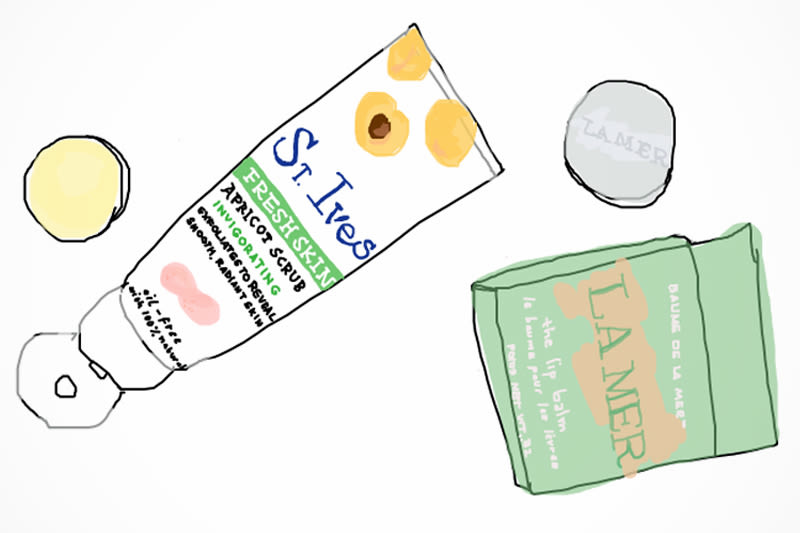A lot of the time, the point of beauty products is to improve or enhance your natural assets: mascara makes the eyelashes you have look thicker and longer and darker; blush simulates the color of your cheeks when flushed (lipsticks, in natural shades, do the same); highlighters mimic a recent stint in the sun. A growing number of us now want to appear as if we’re not wearing anything at all— call it the French Girl Effect—and there’s a whole segment of the beauty industry catering to the “I just woke up this way” aesthetic, offering products whose results are nearly undetectable. But then the question becomes: How much should you pay for something you’re not supposed to notice? And does it make a difference if you pay up? Our answer: It depends.
It’s hard to find a department store or drugstore that does not offer at least twenty different clear lip salves. ChapStick, Carmex, and Blistex are everywhere, though the first doesn’t offer much more than immediate relief (maybe SPF) and the latter two strike some as medicinal (that tingling sensation), and bring to mind ski trips and harsh weather. Vaseline works, but it’s goopy and sort of… creepy to carry around in your purse. Yes, Duane Reade certainly has its charms, but considering how much we use our mouths (speaking, smiling, kissing, making faces at bad jokes), there’s a pretty strong case for slicking on the best you can get.
At $50 a tub, La Mer’s The Lip Balm is expensive for the category, but not for La Mer (!). In fact, and we’ve done our research, it’s hands-down the cheapest item at the La Mer beauty counter. It’s velvety on the mouth, simultaneously minty and vaguely sweet, and tastes like you just brushed your teeth and ate something delicious—there’s something vanilla to it, but not of the Lip Smacker Betty Crocker frosting variety. On your lips, the balm itself isn’t particularly noticeable, since it gets absorbed in a heartbeat, but it makes your mouth feel softer and smoother and just-the-right-amount-of-moisturized. Dab it on—or “pat on lightly,” as the directions advise—and it feels, in a word, expensive. Which is nice, because it is, and because a lot of things are expensive and don’t feel like it. It also looks pretty, pulled from your pocket or purse. It’s a luxury, implying that you have nice stuff, even if that’s not quite universally the case, which, at a certain age (and maybe always?), is kind of why we buy luxury products in the first place.
In another aisle altogether, there are exfoliating body scrubs. Exfoliants do what they sound like, applied in the shower to slough off dead skin and reveal the good stuff underneath. Virtues aside, though, it’s difficult to argue in favor of spending big money on body scrubs: they’re lathered on and rinsed off immediately. Plus, other products (lotions, oils, whatever your moisturizing fancy) will be applied after, so you aren’t looking for a lingering scent. A handful of sand would essentially perform the same job, if you were interested in keeping buckets of sand in your bathroom (and if you are, who are we to stop you—other than to warn you about the havoc it will wreak on your pipes, and: gross).
St. Ives offers one of the most popular—and now sulfate-free—versions, the Invigorating Apricot Scrub, which incorporates apricots (St. Ives’ website attests that the fruit is rich in skin-cleansing antioxidants, and contains an oil “known to hydrate and nourish”) and walnut-shell powder. The scent doesn’t linger, dead skin gets the boot, and while it’s not harsh-feeling upon application, it's rough enough that you feel like you’re getting the job done, for well under $5 (or less, depending on where you look). Sure, the tube is not particularly attractive, but it lives in the shower—you can hide it behind your fancier products if that sort of thing bothers you. For all anybody else knows, you’ve got the whole La Mer line stashed in there.
—ITG
Illustration by Karleigh Sherman.

